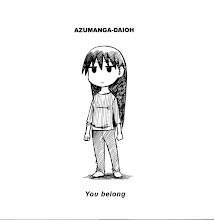Tabimachi Lateshow (旅街レイトショー) is a 4 episode drama series by CoMix Wave Films. The shorts aired on TV in Japan in January of 2016.
Each episode is a self contained story, dealing with the main characters relating to loss and the acceptance of change. The first episode, Recipe, deals with a young aspiring chef who is moving to Europe to improve his abilities. He has to leave the woman he studied under who he has unrequited feelings for. The second episode, Transistor Smartphone, deals with two woman who tried to connect as friends in school. Their personalities prevented that from happening and they muse upon what was lost years later.
The third episode, Summer Festival, deals with a young girl learning about the meaning of Obon Festival and her chance to reconnect with a lost friend during the celebration. The fourth episode, Clover, deals with a grade school teacher reflecting on the countless lives she has seen in one year increments over her 37 year career.
The animation is very simplistic and very limited, the series is more a picture story book than a cartoon. The artwork appears to be water color pieces and are beautiful in their simplicity, perfectly fitting the tone and style of each story. The stories themselves are simple, quaint and haunting at the same time. Each tells an easy to understand tale of the principle characters, allowing enough background to bring across the underlying point of the stories. Each story is mainly driven by the realistic dialogue, but the subtle hints in the animation add more power to the words and unspoken understanding.
These shorts aren't for everyone, the animation is far from the standards people expect in today's TV anime, but what the series brings that is hard to come by is excellent story telling. Powerful story telling within a limited amount of time. Something that stands in stark contrast to hundred episode juggernauts, something to be deeply appreciated, something that showcases anime as a legitimate medium for story telling for mature audiences.
I have little hope for this series seeing any sort of disc release in North America, but for now it is available streaming on Crunchyroll and is well worth the 25 or so minutes it will take to watch the entire thing.
Each episode is a self contained story, dealing with the main characters relating to loss and the acceptance of change. The first episode, Recipe, deals with a young aspiring chef who is moving to Europe to improve his abilities. He has to leave the woman he studied under who he has unrequited feelings for. The second episode, Transistor Smartphone, deals with two woman who tried to connect as friends in school. Their personalities prevented that from happening and they muse upon what was lost years later.
The third episode, Summer Festival, deals with a young girl learning about the meaning of Obon Festival and her chance to reconnect with a lost friend during the celebration. The fourth episode, Clover, deals with a grade school teacher reflecting on the countless lives she has seen in one year increments over her 37 year career.
The animation is very simplistic and very limited, the series is more a picture story book than a cartoon. The artwork appears to be water color pieces and are beautiful in their simplicity, perfectly fitting the tone and style of each story. The stories themselves are simple, quaint and haunting at the same time. Each tells an easy to understand tale of the principle characters, allowing enough background to bring across the underlying point of the stories. Each story is mainly driven by the realistic dialogue, but the subtle hints in the animation add more power to the words and unspoken understanding.
These shorts aren't for everyone, the animation is far from the standards people expect in today's TV anime, but what the series brings that is hard to come by is excellent story telling. Powerful story telling within a limited amount of time. Something that stands in stark contrast to hundred episode juggernauts, something to be deeply appreciated, something that showcases anime as a legitimate medium for story telling for mature audiences.
I have little hope for this series seeing any sort of disc release in North America, but for now it is available streaming on Crunchyroll and is well worth the 25 or so minutes it will take to watch the entire thing.























































